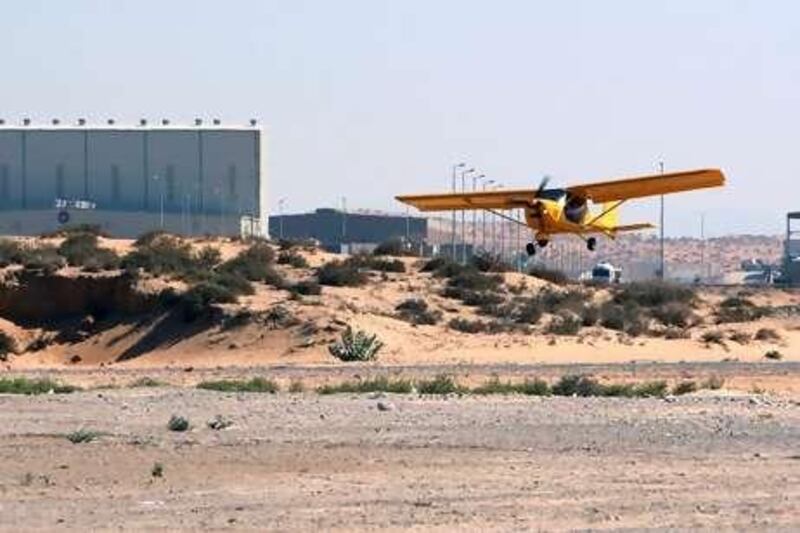Recreational aviators have struggled to gain a foothold in the UAE, hampered by high costs, a scarcity of unrestricted airspace and a difficult regulatory environment. In the 1970s and 1980s, a flying club used to be located at what is now Al Bateen Executive Airport, on Abu Dhabi Island, when it was still the principal airport for the emirate.
It was not uncommon to see private aircraft popular at the time, such as Piper Cherokees or Beechcraft Queen Airs, parked on the tarmac. But security concerns during the First Gulf War led to the club's closure. More recently, other clubs in Umm al Qaiwain and Sharjah have also stopped operations, forcing amateur pilots to drive to Ras al Khaimah where a small airstrip for microlight aircraft continues to operate.
General aviation - any flights other than military or commercial passenger and cargo - is extremely popular in other countries. There are more than 6,000 airports available for recreational pilots in North America and the industry supports 1.3 million jobs, according to the US Aircraft Pilots and Owners Association. In the UK, there are more than 28,000 private pilots and almost 26,000 aircraft used for general aviation, the UK Civil Aviation Authority says.
Flying clubs pay for themselves by renting out aircraft to members, conducting flying tours or training would-be private pilots. But the economics are not always easy, said Pat Gordon, a pilot of 30 years and an aviation adviser to the chairman of the charter operator Royal Jet. "The profit margins are really, really thin," Mr Gordon said. "Most people who get into aviation are romantics at heart and don't realise this."
It is much more costly to operate flying clubs in the UAE than in Europe or the US, he said, which was one reason the price per hour of flight in the country is often excessive. "Moonlighting, holding down a second job that would help contain costs, is possible in many countries but our system of employment visas make that complicated to accomplish here," Mr Gordon said. Maintenance and labour costs are so high that many clubs cannot charge enough to break even, he said, and there were also a host of safety and regulatory restrictions to navigate.
In addition, the country's focus on military and civil aviation often leaves little room for other aircraft to take to the skies. Slightly more than half of the sky over the UAE's deserts and coastal waters is military airspace and restricted even for commercial airlines such as Emirates Airline and Etihad Airways. At Dubai and Abu Dhabi's main airports, runway slots are extremely limited and authorities have favoured commercial airline and business jet traffic after pouring billions of dollars into infrastructure.
So whenever Federal aviation regulators have been approached with a plan to start even a microlight flying club, they have been directed to join the one already in existence, Jazirah Aviation in Ras al Khaimah, said Capt Amith Pillai, one of the club's pilots. The club has about 180 members, of whom 70 are regulars, Capt Pillai said. The ultra-light aircraft fly at 60 knots and are restricted to stay under 1,400 feet, since the airspace above that is controlled by Ras al Khaimah International Airport.
"The airspace is very busy in Sharjah, Dubai and Abu Dhabi and there is not any room," Capt Pillai said. "The authorities like to keep it on the northern side [of the country]." igale@thenational.ae





